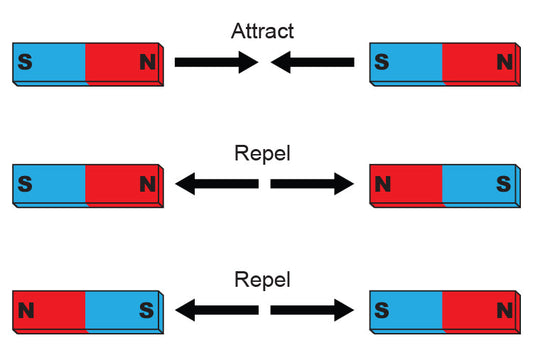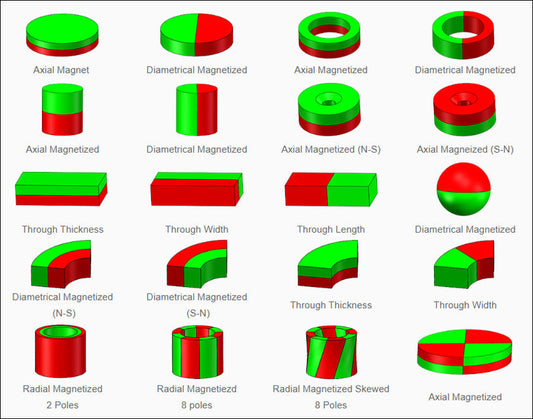Permanent magnets such as Neodymium (NdFeB), Samarium Cobalt (SmCo), Alnico, and Ferrite are widely used across industries. While these materials deliver strong magnetic performance, many of them (especially neodymium) are highly susceptible to corrosion, wear, and surface damage. To ensure durability and reliability, magnets are often protected with specialized coatings and platings.
Why Do Magnets Need Coatings?
Magnet coatings serve multiple purposes beyond just appearance. They are crucial for:
- Corrosion Protection: Preventing rust and oxidation, especially in humid or marine environments.
- Enhanced Durability: Protecting against chipping, cracking, and wear.
- Improved Handling: Providing smoother surfaces for safe installation.
- Aesthetic Finish: Matching design requirements for consumer and industrial applications.
Common Types of Magnet Coatings
1. Nickel (Ni-Cu-Ni) Coating
- The most common coating for neodymium magnets.
- Provides good corrosion resistance and a shiny metallic finish.
- Suitable for most general-purpose applications.
2. Epoxy Coating
- Offers excellent corrosion protection with a black or colored finish.
- Ideal for harsh or wet environments.
- More resistant to chemicals, but less resistant to scratching.
3. Zinc (Zn) Coating
- Provides basic corrosion resistance with a matte silver finish.
- Cost-effective alternative to nickel.
- Commonly used in indoor applications.
4. Gold (Au) Plating
- Thin gold layer applied over nickel for enhanced appearance and biocompatibility.
- Common in medical devices, electronics, and luxury applications.
- Offers good conductivity.
5. Plastic / Teflon (PTFE) Coating
- Provides waterproof protection and chemical resistance.
- Smooth, non-stick surface makes it suitable for medical and food-grade applications.
- Adds durability against mechanical wear.
6. Chrome Coating
- Offers high hardness and scratch resistance.
- Attractive shiny surface for decorative and industrial uses.
7. Phosphating or Passivation
- Used mainly for ferrite magnets.
- Provides basic surface protection and reduces moisture absorption.
Choosing the Right Coating for Your Application
The selection of magnet coating depends on:
- Environment: Humidity, chemicals, or temperature extremes.
- Mechanical Requirements: Wear resistance, friction, or contact pressure.
- Aesthetics: Shiny, matte, or colored finishes for product design.
- Application Type: Medical, industrial, consumer electronics, or marine.
|
Coating Type |
Corrosion Resistance |
Durability |
Common Use |
|
Nickel (Ni-Cu-Ni) |
High |
Medium |
General, Industrial |
|
Epoxy |
Very High |
Medium |
Outdoor, Marine |
|
Zinc |
Medium |
Medium |
Indoor, Cost-Sensitive |
|
Gold |
High |
Low-Medium |
Medical, Electronics |
|
Teflon (PTFE) |
Very High |
High |
Food, Medical |
|
Chrome |
Medium |
High |
Decorative, Industrial |
|
Phosphating |
Low-Medium |
Medium |
Ferrite Magnets |
Final Thoughts
The coating of magnets plays a vital role in enhancing their lifespan, performance, and reliability. Whether it’s nickel for strength, epoxy for outdoor durability, or gold for medical use, choosing the right protective layer ensures that magnets deliver optimal results for years.
At Magnetyz, we provide a wide range of custom magnet coatings to suit your specific industry needs, ensuring durability, performance, and cost-effectiveness.


